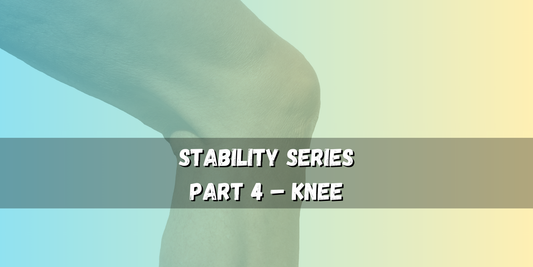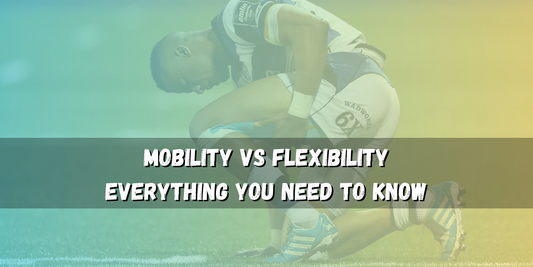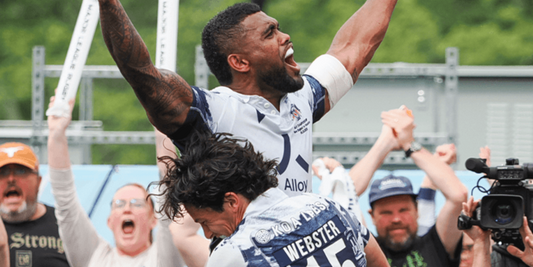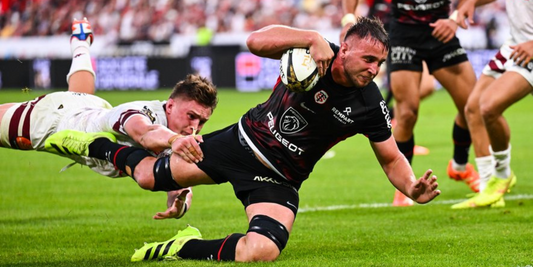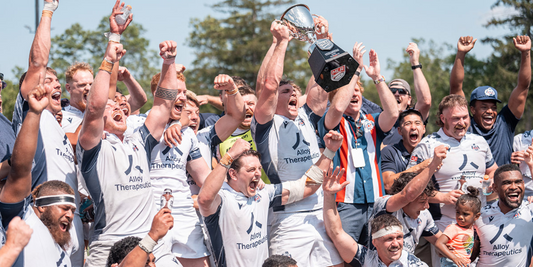Your ankles are your foundation. Every step, sprint, sidestep, and tackle starts from the ground up. If your ankles are unstable, your balance suffers, your movement breaks down, and your risk of injury skyrockets.
In Part 3 of our Stability Series, we’re focusing on ankle stability—crucial for better footwork, sharper cuts, and long-term joint protection in every phase of the game.
Check out the rest of the series:
- Part 1: Core Stability – Strength & Control
- Part 2: Hip Stability – Power & Alignement
- Part 4: Knee Stability – Control & Protection
- Part 5: Shoulder & Stability – Contact & Strength
- Part 6: Neck Stability – Impact & Safety
Let’s dive in.
WHAT IS ANKLE STABILITY?
Ankle stability is your ability to control the ankle joint during both static and dynamic movement—especially while changing direction, landing, or accelerating.
It relies on the strength, balance, and coordination of:
- Peroneals – Help prevent ankle rolling (eversion)
- Tibialis Anterior & Posterior – Control dorsiflexion and arch support
- Calf Muscles (Gastrocnemius & Soleus) – Power propulsion and support landing
- Intrinsic Foot Muscles – Provide fine control, balance, and force absorption
Strong ankles mean less wobble, quicker reactions, and fewer rolled ankles.
WHY ANKLE STABILITY MATTERS FOR RUGBY PERFORMANCE
1. Balance & Agility
Quick footwork starts with control at ground level. If your ankles wobble or collapse, your cuts become sloppy and delayed.
2. Injury Prevention
Ankle sprains are among the most common injuries in rugby. Stability helps you land safely, stay on your feet, and avoid re-injury.
3. Power Transfer
Strong ankles = better ground reaction forces. This improves sprinting, jumping, and directional speed.
4. Joint Protection Up the Chain
Unstable ankles affect knee tracking, hip movement, and spinal alignment. Everything above suffers when the foundation is weak.
COMMON CAUSES OF ANKLE INSTABILITY
Here are the most common causes of poor ankle stability:
- Previous ankle sprains or fractures
- Weak peroneals and tibialis anterior (key lateral stabilizers)
- Poor intrinsic foot strength
- Limited dorsiflexion range of motion
- Inhibited neuromuscular control due to footwear, flat surfaces, or bracing
The result? A reactive ankle, not a stable one.
THE CHAIN REACTION: WHAT HAPPENS WITHOUT ANKLE STABILITY
- Weak Foot Control → Poor Balance → Delayed Reaction Times
- Repetitive Ankle Rolling → Ligament Damage → Chronic Instability
- Flat Foot Collapse → Knee Valgus & Hip Compensation → Long-Term Pain
- Unstable Landing → Higher Risk of ACL or Meniscus Injuries
If the ankles aren’t stable, the rest of the body is forced to compensate—leading to a breakdown in balance, power, and joint integrity throughout the entire lower chain. Training ankle stability doesn’t just protect your feet—it protects your entire lower body.
ANKLE STABILITY ROUTINE FOR RUGBY ATHLETES
Ankle stability training isn’t about wobble boards—it’s about building control, strength, and reactivity in sport-specific ways.
Step 1: Foot & Ankle Activation (3–5 Minutes)
- Goal: Wake up the stabilizers before movement
- Exercises: Toe spreading & doming drills; single-leg calf raises; toe & heel walk
Step 2: Balance & Coordination (5–8 Minutes)
- Goal: Build single-leg control and proprioception
- Exercises: Single-leg balance on pad; single-leg hop; toe taps around a cone
Step 3: Strength & Plyometric Control (5–10 Minutes)
- Goal: Load the ankle through movement and reaction drills
- Exercises: Lateral bounds with controlled landing; banded ankle inversion & eversion; single-leg box jump
Perform 2–3x per week, ideally as part of your warm-up or cooldown.
WATCH THE FULL ROUTINE
We’ve recorded the full Ankle Stability Routine on our YouTube channel to walk you through every step—activation, balance, coordination, strength and plyometric drills.
Watch it now on our Peak Rugby YouTube Channel:
FINAL THOUGHTS
Ankle stability is often ignored until it’s too late. Don’t wait for a sprain to start training your foundation. With strong, stable ankles, you will:
- Move with more confidence
- Cut harder
- Protect your knees and hips along the way.
Next week, we’ll move up the chain to tackle Knee Stability—where strength meets control and injury prevention.
Need More Help?
Check out our Rugby Workout Plans and Customized Training Programs to build a stronger, more resilient body.
This wraps up Part 3 of our Stability Series: Ankle Stability. If you found this post helpful, make sure to:
- Like and share this post with fellow rugby players
- Bookmark the blog to stay updated on the next parts of the series
-
Follow Peak Rugby on X, Facebook and subscribe to the YouTube Channel for more rugby-specific training, mobility, and recovery tips.
Stay strong, keep pushing forward, and keep working on your stability!










